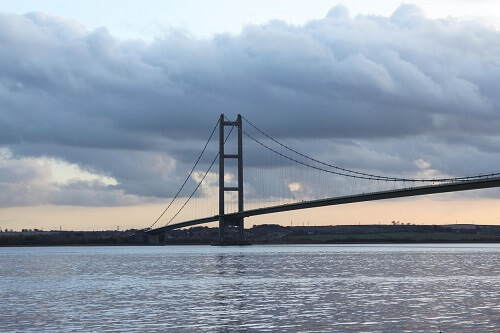A bridge is a structure that is used to cross difficulties such as a river, a channel, a valley, or a highway. Suspension bridges are a very old style of bridge. In the earliest times, ropes and vines were used to make suspension bridges. The modern, strong; sophisticated suspension bridge is an extraordinary bridge among other types of bridges.
|
In this article:
|
Related Articles: |
What is Suspension Bridge?
A suspension bridge is one wherever several cables are set up across two or many towers that support the bulk of the bridge's weight and force. The cables run from the tower to the anchorages.
Suspension bridges are robust and might span long distances. They are high-priced as a result of they take an extended time to create and need an oversized quantity of the fabric. They are sometimes found across harbors with tons of boat traffic. The first parts of a bridge are a try of main cables stretching over two towers and hooked up at every finish to an anchor. Smaller cables hooked up to most cables support the route.

What Suspension Bridges are Made of?
Many suspension bridges are already renowned for their frequent usage. The most components of a span are the towers, anchors, main cables, suspension cables, and therefore the route. A span is extremely completely different from arch bridges, although there will be an arch in an exceeding span. Altogether suspension bridges, the route hangs from huge steel cables that are draped over two towers and secured into solid concrete blocks, referred to as anchorages, on each end of the bridge. Cars cut down on the route, however, because the route is suspended, the cables transfer the load into compression within the two towers. The two towers support the bridge's weight. {adselite}
Functions of Suspension Bridges Parts
The followings are the functions of different parts of Suspension Bridges:
- Towers: Hold the main cables and transfer the load to the ground.
- Anchorages: Anchor the main cables to the ground, resisting the tension force in the cables.
- Main cables: Carry the weight of the bridge deck and the traffic load to the towers.
- Hangers: Connect.
Types of Suspension Bridge
The followings are the types of a suspension bridges:
- Cable-stayed Suspension bridge:
The cable-stayed bridge, just like the span, supports the route with huge steel cables, however in a very different manner. The cables run directly from the route up to a tower, forming a singular "A" form.
- Simple Suspension Bridge:
These bridges are ordinarily created with materials like a rope. These bridges do not have towers or any huge foundations. Because of this, simple suspension bridges are not effective. The materials used are simply swayed by wind most cannot last a natural disaster of any kind. This can be why simple suspension bridges are accustomed to cowl smaller distances and are not as well-liked as other suspension bridges.
- Under-spanned Suspension Bridge:
The under-spanned span may be a rare variety of spans that was created within the early 19th century. This bridge is comparable to the simple suspension bridge, but its trusses are situated below the deck which will increase strength. This bridge also solely spans smaller areas and is usually made up of iron.
- Stressed Ribbon Bridge:
This Bridge contains cables embedded within the deck and contains a touch of an arch. This span is stressed in traction which permits it to be a lot of durable than an easy span. This bridge is created from steel rope, concrete, or treated wood.
- Self-Anchored Suspension Bridge:
This span is extremely like common trendy suspension bridges. It is one major distinction that is not anchored to concrete or rock-like different bridges, this bridge has cables that are anchored to its deck. This puts a lot of tension on the bridge itself which makes it less reliable within the finish.

